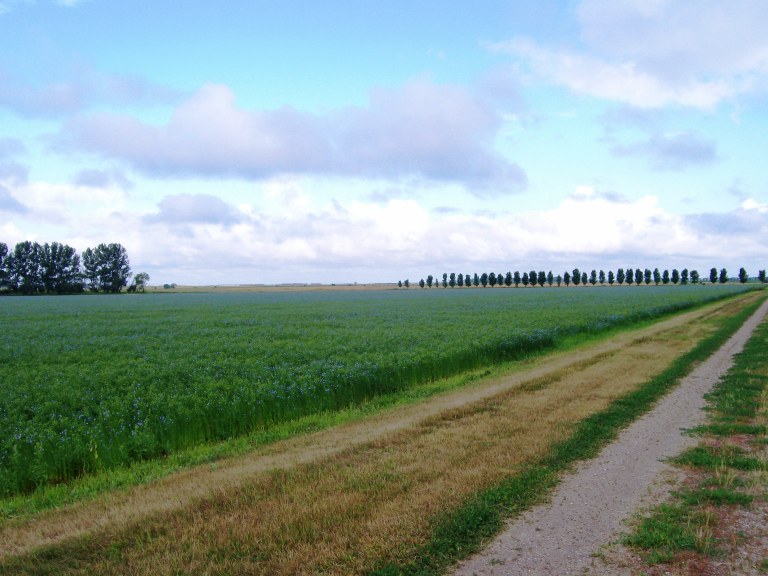Field Inspection Deadline
As is true throughout most of North Dakota, small grains are up and looking good. An overall early spring created a positive scenario for this year’s growing season, allowing growers to control planting dates to potentially maximize yields. A drier-than-normal winter left many potholes dry enough to be seeded again. With timely moisture, yields should be above average.
Along with several hundred agronomic trials (each trial consists of 40-360 individual 100-200 square-foot plots), the Carrington Research Extension Center plants several “regular-size” fields to increase production of Foundation-grade seed. We also plant in the spaces surrounding plots to make the most of our limited land-base. Our Seedstocks fields are managed just like those belonging to the surrounding farmers, with a few exceptions. As a major producer of Foundation Seed in the state of North Dakota, we are conditioning boundaries and monitoring our fields carefully, watching for signs of weeds, insects, or disease so we can manage these pressures appropriately.
In addition to recording initial planting dates for crop insurance coverage, another important deadline is approaching for the certified seed growers. Early season crops Field Inspection Applications must be submitted by June 15. The State Seed Department (SSD) encourages early applications to avoid late fees.
Application forms can be obtained through your county agent, by calling the SSD at 701-231-5400 or accessed online at www.ndseed.com. Other important deadlines are on the application forms.
A few key items must be submitted with your application:
- A bulk certificate or seed bag tag for each variety. The lot number for the application will come from the bulk certificate or seed tag lot number.
- A copy of the FSA map with the field boundaries indicated. A five-foot isolation strip, such as a ditch, a fence line or a mown or tilled border, between inseparable crops must be in place before the field inspector arrives.
- Payment of field inspection fees must accompany the signed application. The payment schedule is located on the back of the sheet.
- A cropping history of at least one year. Durum producers must provide a two-year crop history with no wheat on the field. There is enough space for the two year history in the same box.
Below is an appropriate example of a clean field border. I hope you have a good growing season!

Dave Copenhaver
Foundation Seedstocks Research Spec.


